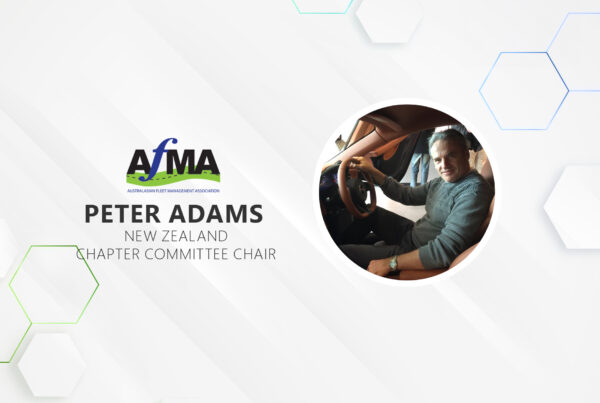Working in the fleet profession in 2020 naturally brings with it many challenges and ongoing pressures. Aside from financial obligations, continued maintenance and repair tasks, there is the ongoing and very serious issue of safety that can never be forgotten or neglected.
From completing risk management procedures, to researching and purchasing the safest and newest vehicles, to handling preventable incidents there can be a lot for the average fleet manager to consider. Perhaps the most painstaking task within all of this is gathering a team within your organisation to handle these ongoing safety concerns.
Detailed below are a few key tips that every organisation should consider adopting if they are seriously committed to the safety and well-being of their drivers heading into this new financial year.
What is the main purpose of a fleet safety committee?
The primary objective of a fleet safety committee is to review all vehicle incidents where company business was being undertaken or where a company supplied vehicle was involved to determine if the incident was preventable.
A well set up committee will also conduct a detailed review into the events that led up to the incident and consider recommendations that will ultimately reduce the chance of a similar incident from reoccurring.
Who from your organisation should be involved in the committee?
As a minimum, the Fleet Safety Committee should be comprised of representatives from human relations, the fleet management team, drivers and appropriate supervisors and managers.
The make-up of your committee will obviously differ from organisation to organisation, but make sure to have a variety of people from various positions included so that everyone can feel that their voice is being heard. Not only will this approach help the dynamic of your team, but it will more than likely have a flow-on effect that will also improve the overall safety culture of your workplace.
What tasks would an ideal committee be responsible for?
A successful fleet safety committee will review all company vehicle incidents within 10 business days. Its task is to determine if the incident was preventable so that appropriate action can be taken. The overriding criteria is that any response must be adequate from a safety standpoint. It must be clearly demonstrated that an analysis was made, and, in all cases, corrective action was specified and taken.
Who exactly would this plan be applicable to?
No one should be exempt, and it is unacceptable to excuse, mitigate or accept any exceptions based on commercial criteria such as the person being the best sales employee or a senior manager.
The system applies to all employees whose regular or principal duties involve driving a company owned vehicle or who lease, rent, or use their own vehicles on company business regardless of how infrequent that use might be.
The company needs to show clearly that it has adequately evaluated, assessed and addressed all the above items as well as any other which are relevant to the organisation’s particular industry or method of doing business.
What is a preventable incident?
A preventable incident is defined as an incident that results in property damage and/or personal injury, in which the driver in question has failed to exercise every reasonable precaution to prevent the incident.
Unless there are extenuating circumstances, a driver failing to do any of the following should result in the incident being found to have been preventable:
- Adjust speed to conditions of light, weather, road or traffic;
- Recognise and amend actions to compensate for the driver’s own temporary physical, mental, and emotional condition;
- Adjust to clearance at top, sides, front, or rear of vehicle;
- Concede right-of-way when necessary to avoid an incident;
- Observe conditions at rear of vehicle while reversing;
- Control speed so as to be able to stop within a safe distance;
- Observe traffic laws and signs;
- Observe company operating rules or special instructions;
- Ensure the timely performance of preventative maintenance according to manufacturer’s recommended service schedules, the lack of which results in a vehicle failure;
- Perform the weekly ten-minute walk around inspection;
- Report obvious vehicle deficiencies or defects (e.g. faulty brake signal lights);
- Observe safe practices taught in the company training program or published in bulletins;
- Refrain from driving under the influence of alcohol or illegal drugs whether on company business or not;
- Seek the advice of their Doctor or Pharmacist and not drive, or undertake other duties, while taking a course of medicine that might impair their judgement.
What else might be considered preventable?
In addition, damage to the interior of the vehicle will be considered preventable if caused by improperly locked doors, cigarette burns, or by lack of care by the operator. Where lack of proper care and maintenance of the vehicle is the cause of an incident, the incident will be considered preventable.
Incidents will usually be considered as being “non-preventable” when occurring under the following conditions: –
- Hit in the rear;
- Hit while properly parked; and
- Incidents in which the company driver exercised every reasonable precaution.
How can a fleet safety committee implement regulated consequences for preventable incidents?
Individuals who are assessed as being involved in a preventable incident should be advised of the consequences. While this can vary from organisation to organisation the overriding criteria is that an analysis was made and, in all cases, corrective action, designed to ensure non-recurrence, was specified and taken.
The process for all preventable incidents might be one or a number of the following:
- A notice from the Fleet Safety Committee stating why the incident was found to be preventable is sent to the employee and the employee’s supervisor;
- The employee’s immediate supervisor must conduct a consultation with the employee;
- The employee may be required to attend a remedial driver training program;
- The employee may be reassigned to a job which does not require driving, if available;
- Termination of employment if the transgression is serious enough.
How hard is a fleet safety committee to set up?
Getting any new idea off the ground in an organisation can be tricky at the best of times, but the benefits to your workplace will certainly outweigh any initial efforts. Having a designated safety committee is a no-brainer and will ultimately give you a better idea of how you can discipline and correct poor driver behaviour before it permeates across your organisation.
Detailed advice on the topic of fleet safety is available in the AfMA Fleet Management Guide. Contact our office on 03 9866 6056 to enquire about membership with AfMA.




















